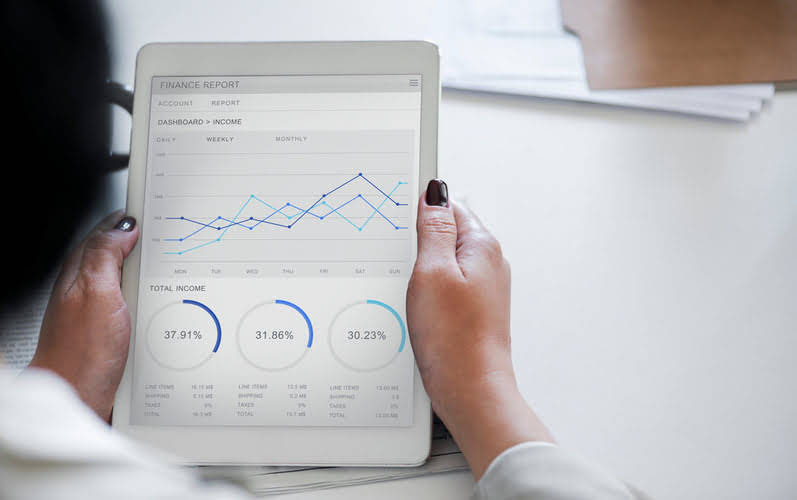
Thus, it is not sensitive to companies’ leverage levels and tax rates variations. For example, the two companies have different debt levels, so the interest expense paid is also different. Since we exclude interest expense, the two are more comparable when using EBITDA.
- It is a financial metric used to analyze the business performance of a company at an operational level.
- Our next section comprises two parts, where we’ll calculate the EBITDA of our hypothetical company using the top-down bridge followed by the bottom-up bridge.
- Moreover, these items tend to be unstable, sometimes rising significantly in the previous period and sometimes falling sharply in the next period.
- In sectors with high depreciation and amortization costs, such as manufacturing, EBITDA margin offers a clearer picture of financial health and core operational efficiency.
- Investments in securities market are subject to market risks, read all the related documents carefully before investing.
- We note that Earnings Before Interest Taxes Depreciation and Amortization is not directly provided in the income statement.
- Sometimes a company will highlight its EBITDA margin as a tactic to draw attention away from its debt and enhance the perception of its financial performance.
Nội dung bài viết
How to Use the EBITDA Formula in Excel to Calculate Profitability
While there are numerous advantages or significance of EBITDA margin equation, there are a few factors from the other end of the spectrum as well. Now that we understand the basics and intricacies of EBITDA margin calculation and implication, let us also touch upon the practicality of the concept through the examples below. Investments in securities market are subject to market risks, read all the related documents carefully before investing. The contents herein above shall not be considered as an invitation or persuasion to trade or invest. I-Sec and affiliates accept no liabilities for any loss or damage of any kind arising out of any actions taken in reliance thereon.

Industry-Wise Margin

This metric is useful for comparing companies of different sizes, as it normalizes profitability across businesses with varying revenue levels. Profit margin includes all expenses, including interest, taxes, depreciation, and amortization, whereas EBITDA Margin focuses solely on operational performance. EBITDA excludes non-cash expenses, capital expenditures, and taxes, which means it does not provide a clear estimate of a company’s actual cash flow https://www.bookstime.com/articles/salaries-and-wages generation.
How to Calculate EBITDA Margin and What It Says About Your Financial Health

Additionally, using conditional formatting to highlight discrepancies ensures that misentered values are easily spotted. Excel’s formula auditing what is ebitda features, such as trace precedents and error checking, help identify discrepancies before performing calculations. Conditional formatting can highlight anomalies, such as unusually high expenses or negative values where they shouldn’t be. Using named ranges instead of cell references improves readability and makes formulas easier to understand, particularly when dealing with complex financial models.

Typical examples of non-recurring items would be restructuring costs or one-off items such as fines or compensation. It may also be labelled as operating profit or EBIT depending on the company’s statements. Since the earnings before ITDA only computes profits in raw dollar amounts, it is often difficult for investors and creditors to use this metric to compare different sized companies across an industry. A ratio is more effective for this type of comparison than a straight calculation. LMN company declared a net profit, before taxes and interest, of $3M for year-end 2015. In most cases, calculating EBITDA requires only information from a company’s income or cash flow statement, so it’s a fairly simple and straightforward metric to analyze.

Why is D&A an Add-Back to EBITDA?
A company that finances operations with debt will have higher interest costs than one relying on equity funding. The term “normalized operating expenses” refers to a company’s recurring operating costs, like SG&A and R&D, while excluding non-cash expenses. On the other hand, the operating expenses incurred, including non-cash items (D&A), are subtracted from gross profit to calculate EBIT. The top-down EBITDA bridge starts with operating profit (EBIT) from the income statement and adds back D&A from the cash flow statement (CFS). In simple terms, EBITDA is a proxy for the recurring operating profitability of a company since the effects of non-cash items like depreciation and amortization (D&A) are removed.
- First, we subtract revenue by the cost of goods sold and operating expenses such as selling, general and administrative expenses.
- Investors find EBITDA margin useful for benchmarking performance across companies and industries.
- Adding it back in EBITDA ensures profitability reflects operational strength rather than accounting treatment of long-term assets.
- The formula to calculate EBITDA starts with net income—from which taxes, interest expense, depreciation, and amortization are added back.
- This is because EBITDA ignores changes in working capital, usually needed in growing a business.
- This makes it particularly useful for investors looking to compare companies within the same industry or for managers aiming to benchmark their performance against competitors.
The footnote says there is an R&D expense, and a provision related to a legal claim, both included in SG&A. These have already been included to arrive at operating profit, however, a legal claim provision is not part of the operations of the business and must be added back. R&D are expenses related to the discovery of new technology and are ignored for this calculation. For example, it’s not uncommon for an investor to want to see how debt affects a company’s financial position without the distraction of the depreciation expenses. The EBITDA margin reveals what portion of a company’s revenue is left after covering operating costs, but before considering taxes, interest, or depreciation.
- For capital-intensive industries such as oil and gas, EBITDA margin can overstate profitability.
- EBITDA provides an indication of how much cash a company earned, while EBITDA margin indicates how much cash an organization generated in a year in relation to its total sales income.
- Like gross margin, operating margin also measures profitability, but it includes some additional costs.
- The template enables you to compare performance year-over-year; if the EBITDA margin is rising, this would suggest the business’ operations are improving.
- The EBITDA margins are identical for all three companies (40.0%), yet operating margins range from 25.0% to 35.0% while net income margins range from 3.5% to 22.5%.
A Modern Guide to Capital Growth Management for Traders and Investors
Or, the marketing strategy is less effective, so less revenue is generated from selling the product. Examining the EBITDA margin is useful for comparing a company’s performance with peer https://addicted2fashion.net/balance-sheet-example-template-format-analysis/ companies in its industry. A higher ratio is better because the company makes more money for each sales dollar. This amount is deducted when calculating net income but is later added back in EBITDA calculations. Removing taxes allows for better comparisons across different regions, as companies in high-tax jurisdictions may appear less profitable despite strong operating performance.


